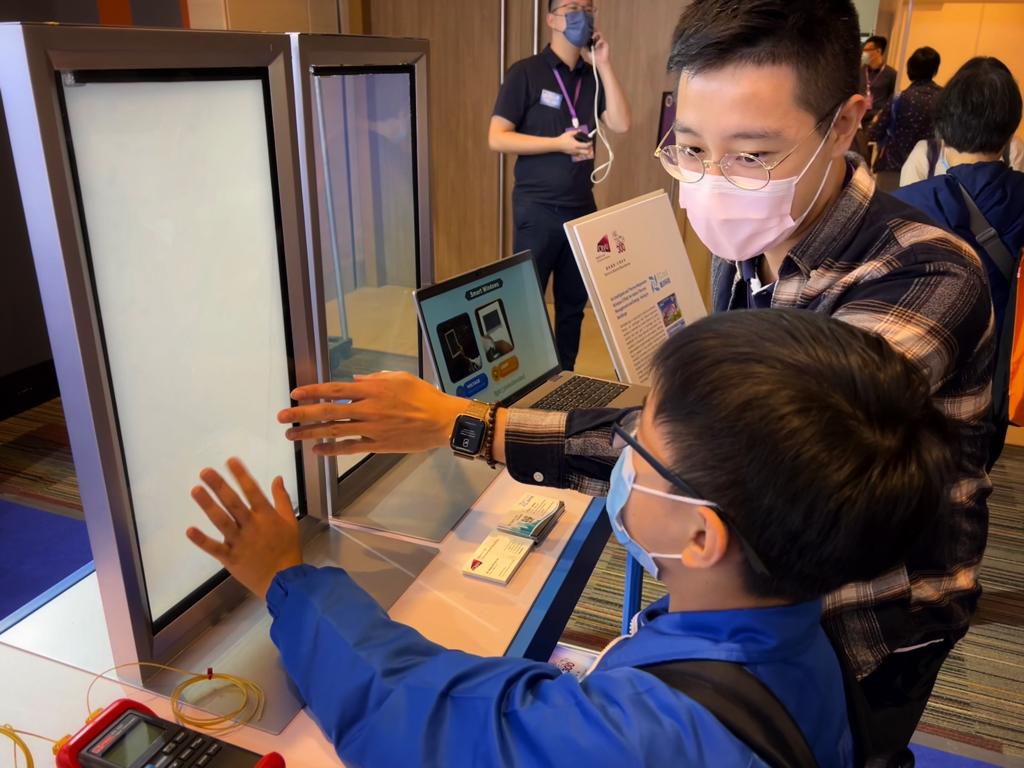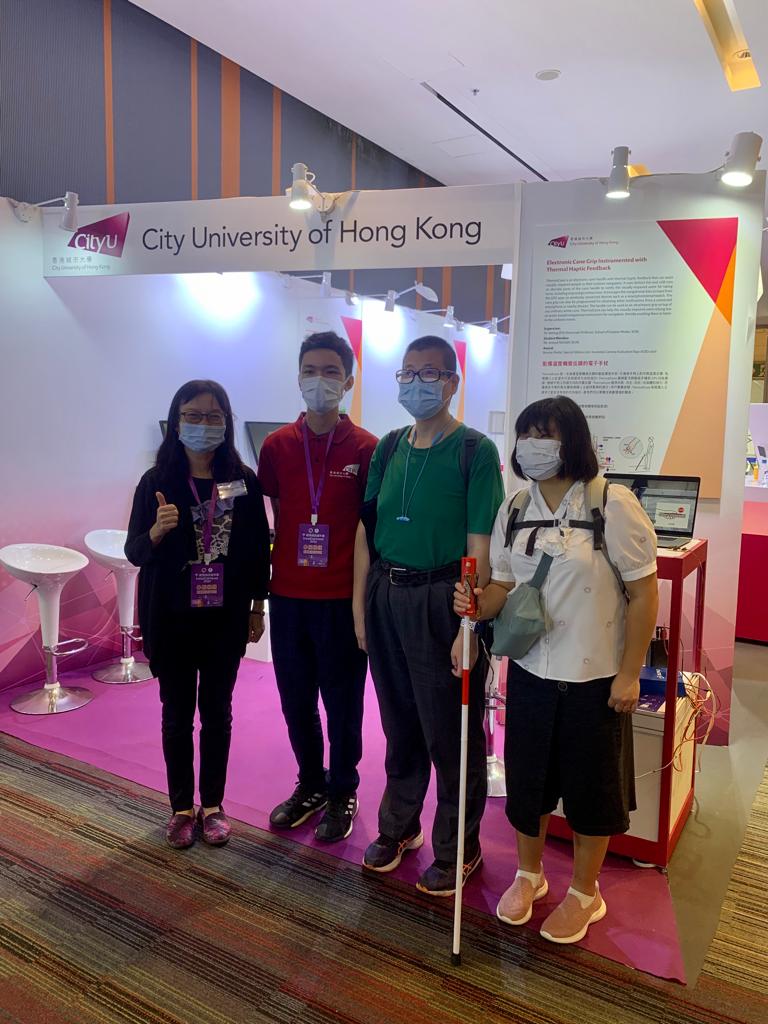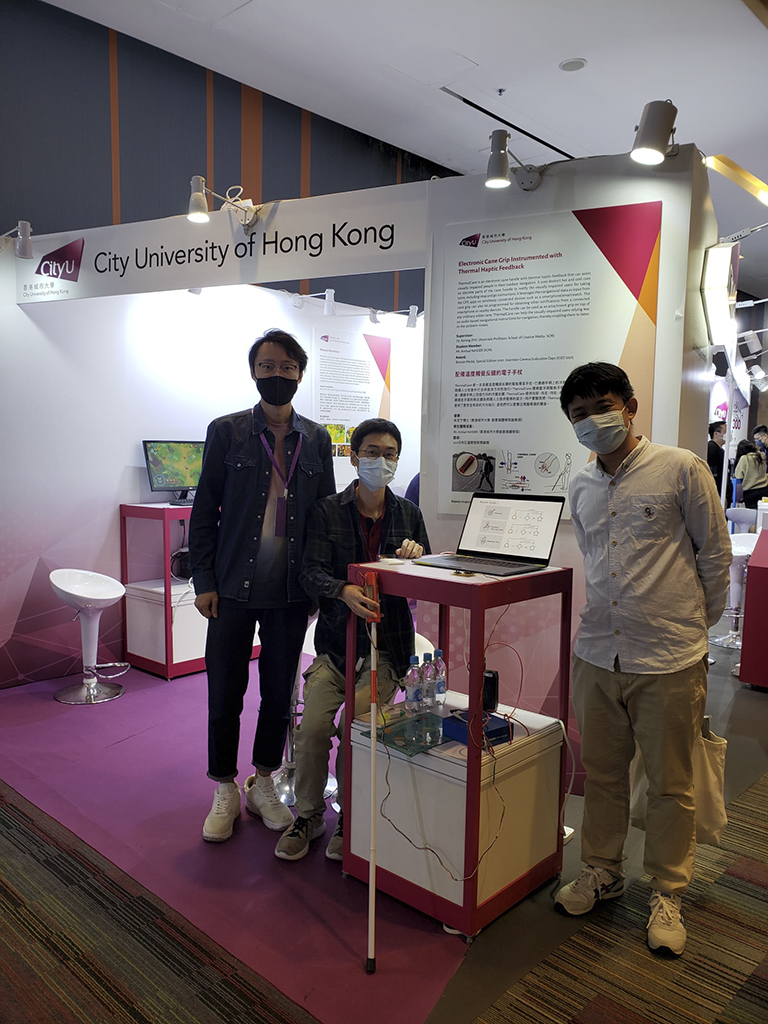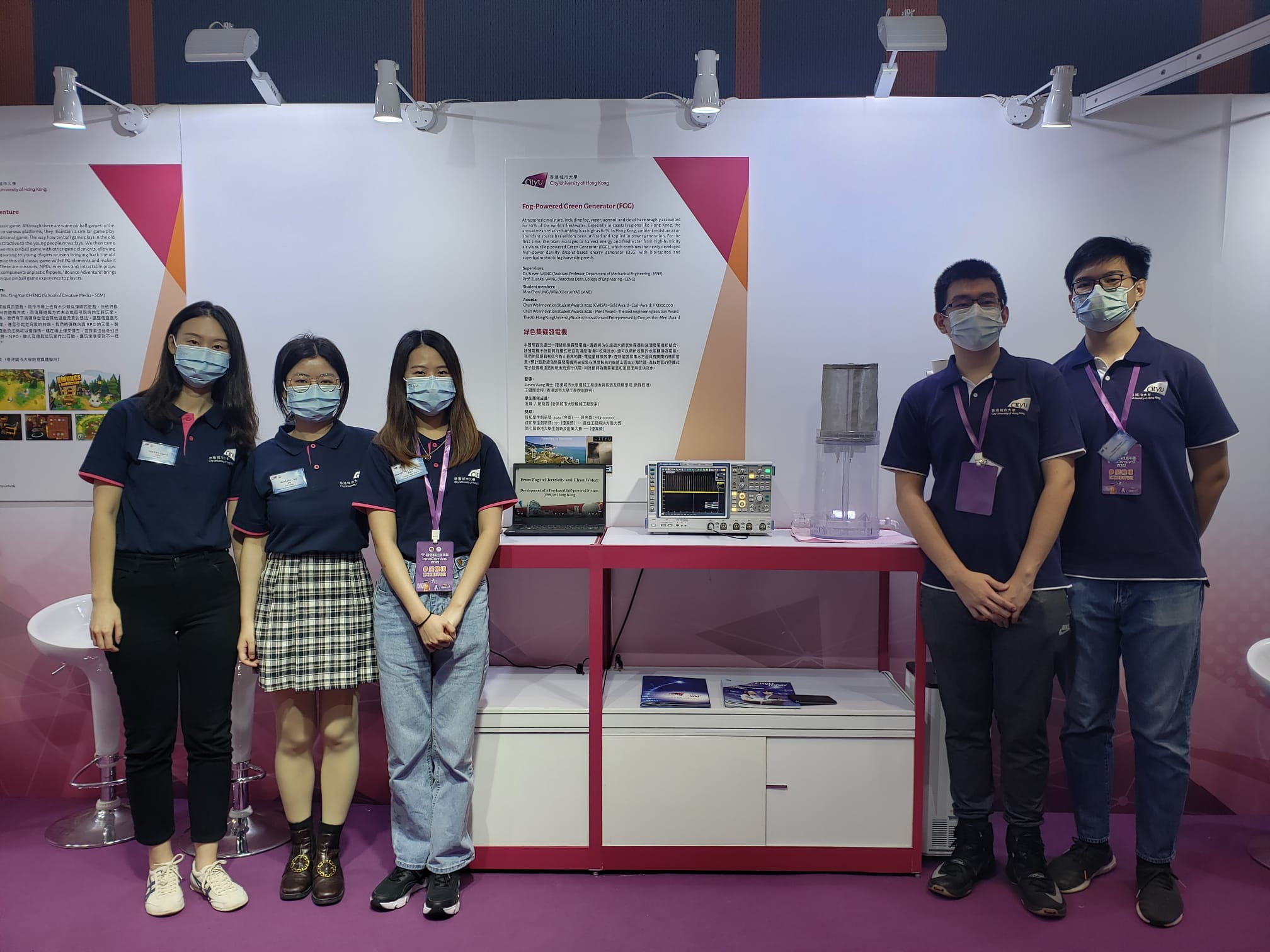Main navigation
When you have acquired some valuable and interesting knowledge, you may come up with inventive and practical applications and develop a product. With such a new invention, you may want to share with the world. But before that, wouldn’t it be nice if you could collect constructive feedback from potential users so that you can improve on the product before introducing it into the market? That is why tech fairs could be a heaven for innovators. Recently, our researchers and inventors at CityU had such a golden opportunity at InnoCarnival 2021, themed “Innovate for a Bright Future”, held end of October at Hong Kong Science Park in Shatin. Where inventive ideas were exhibited under four categories: Education, Green Energy, Entertainment and Assistive Technologies.
Intelligent and Thermo-Responsive Window

How can we use smart windows to adjust indoor temperatures and save energy?
One of CityU’s HK Tech 300 Start-up, I2Cool, presented an interesting environmental project – an Intelligent and Thermo-Responsive Window (ITRW) for indoor thermal management and energy-saving in buildings. Windows play a crucial part in built environment. As such, the smart window was invented as a novel solution to smartly control the solar gain in buildings and thus moderate the indoor thermal environment. The window is transparent in cold weather, allowing solar radiation to pass through and provide warmth, but it is opaque in hot weather, blocking the solar radiation to prevent the room from overheating. Notably, the invention can regulate the indoor air temperature by over 4˚C and save around 7% of energy consumption in buildings, aiding in the development of energy-efficient and sustainable buildings.
A fascinating element of the Carnival is that visitors can ask questions and receive replies immediately. For this smart window, there were many constructive interactions during the Carnival. For example, a visitor wanted to know if we can control or change the temperature at which the colour change occurs, e.g. change the colour only at 35˚C, 25˚C, etc. If yes, then users can adjust their preferred temperature in different seasons. The researchers at the booth gave an affirmative answer. They explained that we can control the transition temperature from around 20 to 32˚C. Customers need to choose the specification when buying the product. And if they find it not suitable, they can easily remove it and swap for another.
Can the window keep transparent even in hot weather? A visitor asked this question because he wanted to keep the view from the window even in high temperature. The researchers explained that it cannot because the white colour is used to reflect solar heat in summer. That is why they suggest users applying on windows of warehouses or toilets, or use them as sky / roof windows. Another visitor is concerned about the durability of the window. What is the lifetime of the window? And do we need to replace it from time to time? The researchers reassured that the lifetime of the window is more than 5 years, so it only needs to be replaced after 5 to 10 years.


How about assisting visually-impaired people in their outdoor navigation by using an electronic cane?
CityU’s School of Creative Media also participated in the Carnival, featuring three imaginative inventions. A noteworthy one was the ThermalCane, an electronic cane handle with thermal haptic feedback that can assist visually-impaired people in their outdoor navigation. It uses distinct hot and cold cues on discrete parts of the cane handle to notify the users for taking turns, including stop and go instructions.
The smart cane leverages the navigational data as input from the GPS apps on wirelessly-connected devices such as a smartphone / smartwatch. The handle can also be used as an attachment grip on top of any ordinary white cane. ThermalCane can help the visually-impaired users rely less on audio-based navigational instructions for navigation, thereby enabling them to listen to the ambient noises.
The inventor had asked some visually-impaired users to test the cane before the exhibition, and most of them gave positive feedback. However, there were still some valuable comments from visitors. For example, a visitor commented that the battery was too heavy. Another visitor, who was visually impaired, was concerned about the sensitivity of the cane tip. He explained that, when they use the cane, they constantly move the cane from left to right, and the tip of the cane would touch the ground frequently. He was wondering if that would affect the cane’s sensitivity of temperature changes. The researchers responded that, in their experiments, the walking turbulence had minor influence on the on-skin thermal perception of the participants.

Can we use atmospheric moisture to generate energy and reap freshwater?
Yet another impressive invention was the Fog-powered Green Generator (FGG). As atmospheric moisture, including fog, vapour, aerosol and cloud, roughly accounts for 10% of the world's freshwater, it would be beneficial to catch such moisture in the atmosphere and make good use of them. It is especially true in coastal regions like Hong Kong, where the annual mean relative humidity is as high as 80%.
With FGG, energy and freshwater can now be harvested from high-humidity air, thanks to a combination of the newly developed high-power density droplet-based energy generator (DEG) and the bioinspired, superhydrophobic fog harvesting mesh.
There were invaluable suggestions during the exhibition:
- The freshwater obtained can be reused for farming or drinking.
- FGGs can combine with toilet flushing systems to generate electricity in remote areas, and the electricity thus generated can be used in the toilets.
Other precious gems
Besides the above three innovations, four other research achievements were demonstrated at the Carnival by CityU’s creative innovators.
- Bounce Adventure: Combines the old classic game of Pinball with role-playing game (RPG) elements and make it into a 3D game. There are missions, non-player characters (NPCs), enemies and intractable props. This makes the pinball game more captivating to young players – and it may even bring back old players.
- M.A.V.I.S: Stands for Multi-purpose Arduino + raspberry-pi VR Interactive Skeleton. The goal is to create an affordable Arduino and Raspberry-Pi powered, 3D-printed robot skeleton that is controlled via a VR application (Oculus Quest), and which can be easily redesigned, improved and repaired under different use cases.
- RightPick: A platform utilising AI capability to give DSE students good recommendations for JUPAS program selection, based on big data and iPad comparison-based algorithm from 1 million+ data points provided by university students and graduates.
- The Achievers: An exclusive online learning platform for international exams in Hong Kong, which include IAL, GCSE, IB, IELTS, SAT etc. Students could choose subjects and exams to conduct tutorials according to their needs.
Events like InnoCarnival 2021 provides us with a welcome opportunity to not only present our inventions and research achievements, but also set a platform for knowledge exchange. Inventors have the privilege to get valuable feedback from real potential users. They can then further refine their inventions before selling them as a product. That is also one of the meaningful missions of CityU’s Knowledge Transfer Office, which is the applications and commercialisation of inventions for the public good.